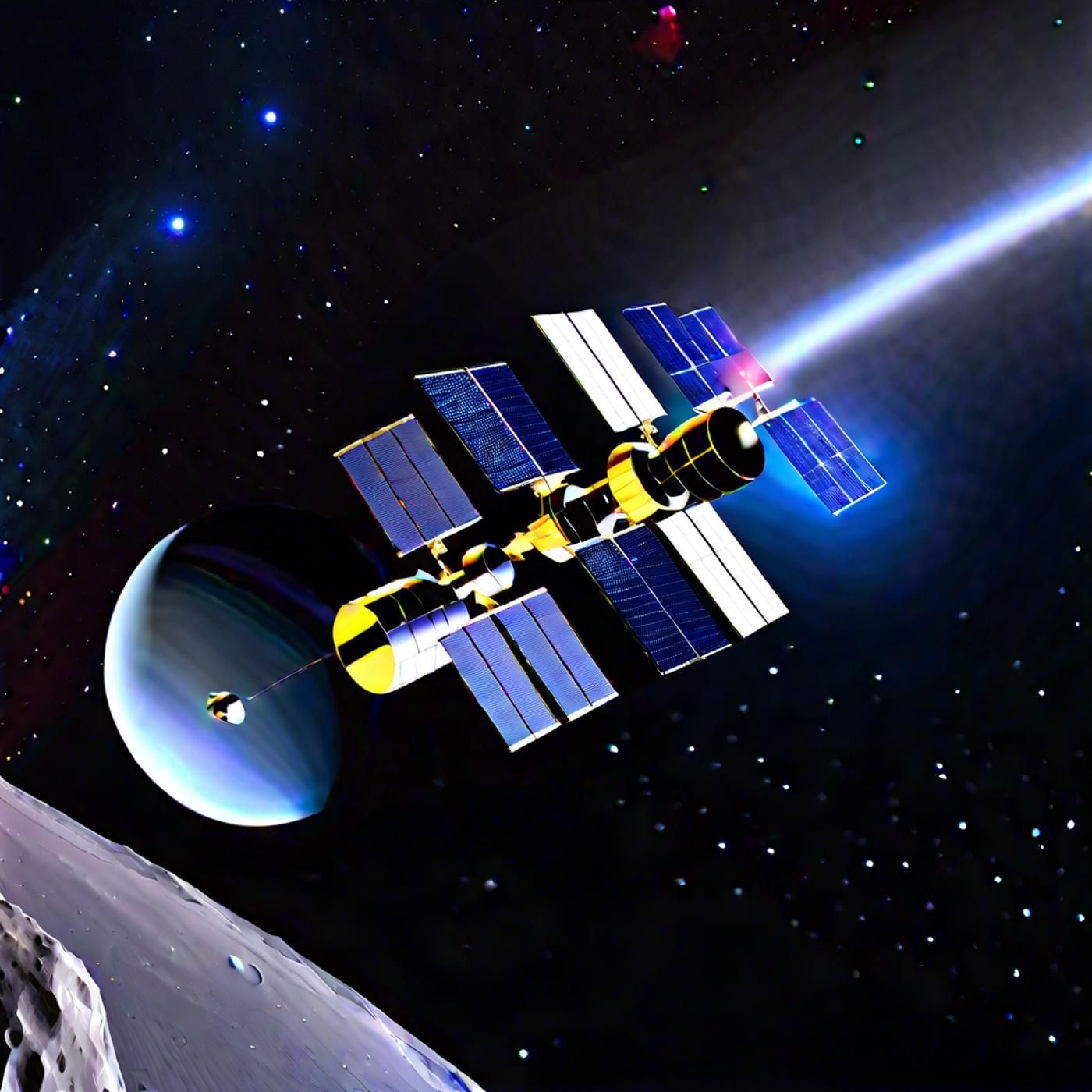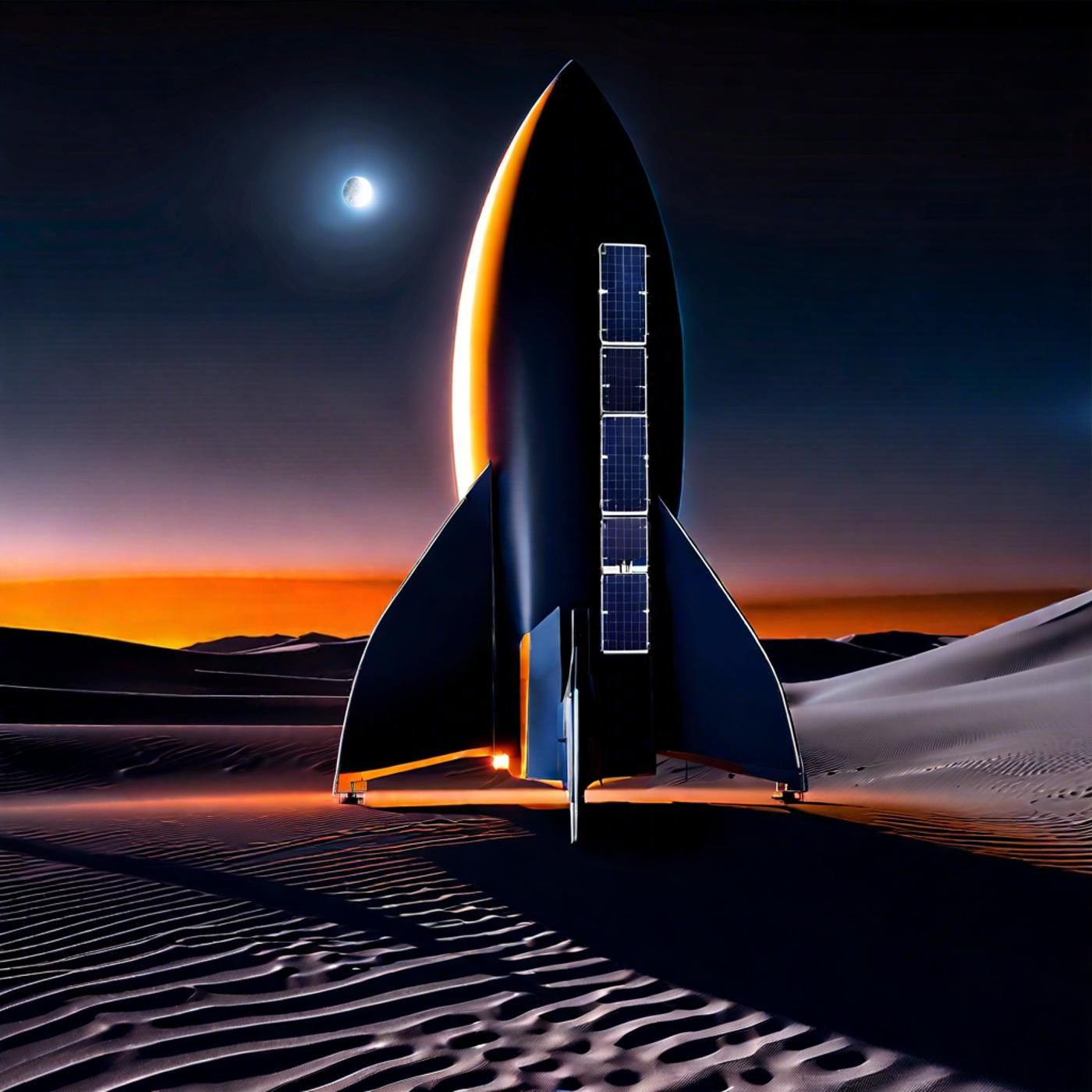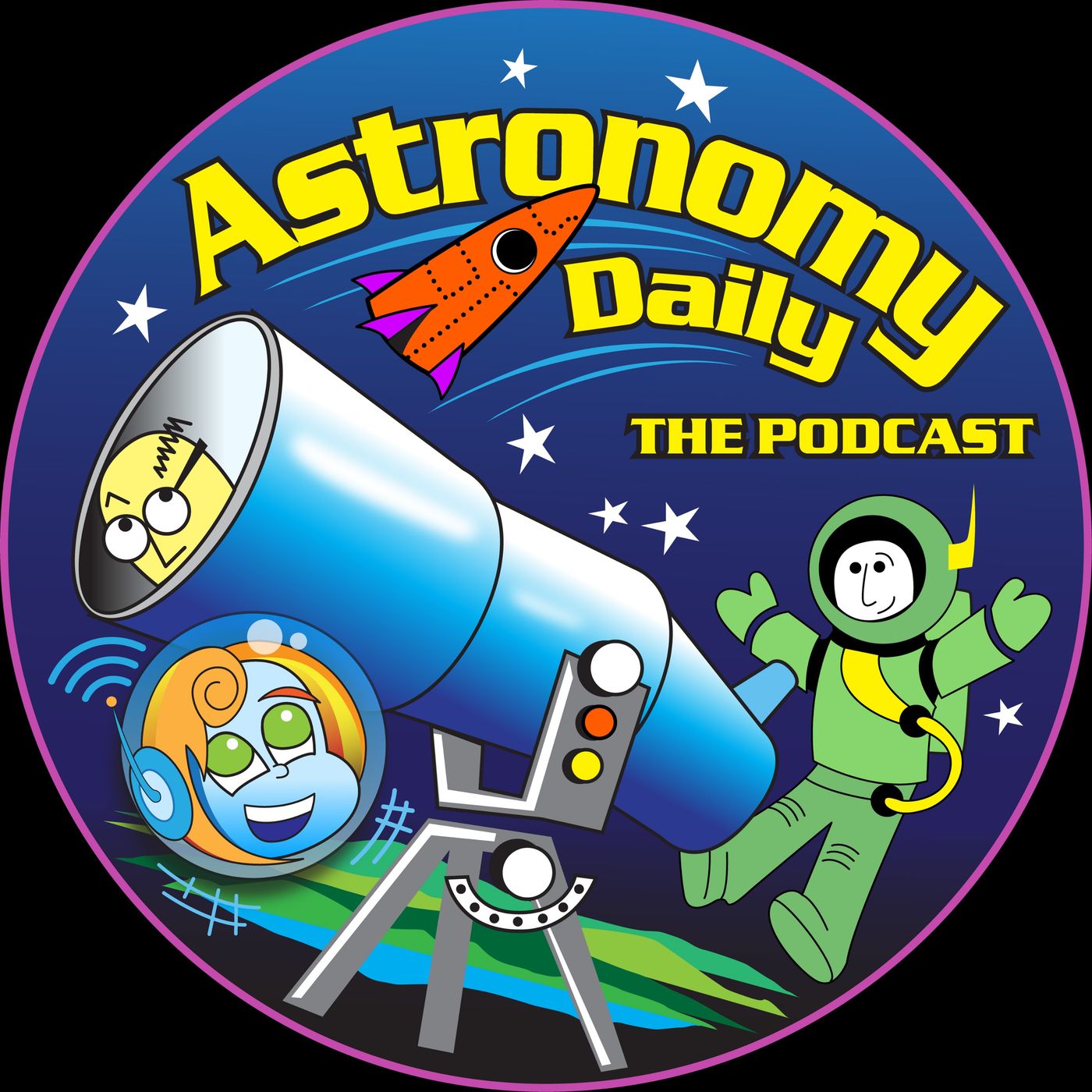S03E90: Firefly's Delay & Space Medicine Breakthroughs
Welcome to Astronomy Daily, your go-to podcast for the latest updates in the universe. I'm Anna, your host for today. In today's episode, we'll explore a wealth of exciting topics. We'll be delving into the recent scrubbing of a Firefly Aerospace...
Welcome to Astronomy Daily, your go-to podcast for the latest updates in the universe. I'm Anna, your host for today. In today's episode, we'll explore a wealth of exciting topics. We'll be delving into the recent scrubbing of a Firefly Aerospace mission that aims to send educational cubesats into space. We'll also discuss groundbreaking research at the intersection of space medicine and human longevity. And finally, we'll look at the fascinating potential of using Martian lava caves as habitats for future astronauts. Today's episode promises to be both engaging and informative, covering the latest developments that push the boundaries of our understanding of the cosmos. So let's dive into our stellar lineup of stories.
Thank you for tuning into Astronomy Daily. I'm Anna, and I hope you enjoyed today's journey through some of the most exciting news and discoveries in astronomy and space exploration. Remember to visit our website at astronomydaily.io for back episodes, our daily newsletter, and the latest news in space and astronomy.
Astronomy Daily is available on Spotify, Apple Podcasts, YouTube Music, and iHeartRadio. Please subscribe, rate, and review.
Special thanks to our sponsors NordPass, NordVPN, ProtonMail, and Amazon. Links to their offers are available on our website. Until next time, keep looking up.
www.astronomydaily.io
www.bitesz.com
Become a supporter of this podcast: https://www.spreaker.com/podcast/astronomy-daily-the-podcast--5648921/support.
This podcast features the latest in astronomy news and discoveries
Anna: Welcome to Astronomy Daily, your go to podcast for the latest updates in the universe. I'm Anna, your host for today. In today's episode, we'll explore a wealth of exciting topics. We'll be delving into the recent scrubbing of a Firefly aerospace mission that aims to send educational cubesats into space. We'll also discuss groundbreaking research at the intersection of space medicine and human longevity. And finally, we'll look at the fascinating potential of using martian lava caves as habitats for future astronauts. Today's episode promises to be both engaging and informative, covering the latest developments that push the boundaries of our understanding of the cosmos.
Launch of Firefly Aerospace's fifth alpha rocket scrubbed due to ground support issue
So let's dive into our stellar lineup of stories. Firefly Aerospace's mission to launch its fifth alpha rocket has hit a snag, with the launch being scrubbed due to a last minute ground support issue. The mission countdown had reached just t -8 seconds when the call for an abort came through, pushing the launch to a later date, possibly sometime this week. This mission, dubbed noise of summer, aims to carry eight cubesats into a sun synchronous Earth orbit. These cubesats come from various educational institutions and NASA centers, highlighting the collaborative nature of this venture. The Alpha rocket, standing at 29.48 meters tall, is part of NASA's $9.8 million venture class launch services demo two contract classified as a category one rocket by NASA, this mission is seen as high risk due to its new configuration and limited flight history. Despite the challenges, this initiative marks a significant step forward in connecting small satellites with emerging rocket technologies as Firefly continues to work towards a successful launch. This project underscores the promise and potential pitfalls of pioneering space missions for small spacecraft. M Space Medicine is taking center stage as the space sector burgeons, bringing forth opportunities for long term spaceflight and space tourism. At the core of this domain is the study of aging and longevity in space, a research area that promises groundbreaking health advancements not only for future astronauts, but also for us back on earth. The nexus of space medicine and human longevity research is revealing insights that could significantly extend to healthy human life. Longevity research in space is revolutionizing our understanding of how the human body responds to the extreme conditions of space travel. For instance, microgravity induced changes to body functions closely mirror the aging process here on Earth, but occur at a much faster rate in space. This rapid aging effect offers a unique laboratory setting to accelerate research and develop countermeasures. Technologies like 3d bioprinting are emerging as pivotal tools in this arena. Already, scientists are reprogramming cells to create functional copies of tissues and organs in space. These advances could be critical in crafting on demand medical solutions to keep astronauts healthy over prolonged missions. one notable collaboration involves NASA and several us health agencies extending the lifespan of 3d tissue chips to study disease models and drug development under space like conditions. This initiative aims to use these chips for up to six months, advancing our knowledge about how space environments affect human physiology and leading to innovations in medical treatments. Moreover, NASA's partnerships with institutions like the Department of Health and Human Services and the National Institutes of Health underscore the importance of space based biomedical research. The element of longevity technology finds a clear foothold in both earth and space based research. Current technologies such as genomics, AI, and big data are already pushing the boundaries of human lifespan, with projections suggesting we may 1 day achieve average lifespans of up to 120 years on Earth. These advancements have shown potential in terms of skin rejuvenation and cancer treatments, and they hold equally promising futures in space applications. For example, Colgate skin aging uses a 3d model of engineered human skin cells to study molecular changes in space. This research may yield new ways to protect human skin from aging processes, both in space and terrestrially. Space agencies and private companies are increasingly investing in joint ventures to harness the synergies between terrestrial longevity research and space health. Initiatives such as bio printing organs and targeted gene therapies are just beginning to scratch the surface of what's possible. Major pharmaceutical companies like Biogen Inc. Eli Lilly Merck, and even smaller biotechnology firms are contributing to this wave of research, exploring the effects of space travel on tumors and blood vessels, among other areas. Space medicine and human longevity research are set to shape the future of human civilization as we edge closer to becoming an interplanetary species. By studying and solving the health challenges posed by space travel, we are also unlocking potential pathways to extend healthy, long lives here on earth, ultimately creating a future where technological and medical advancements go hand in hand to better humanity as a whole.
A team of astronomers have discovered the first millisecond pulsar
A major astronomical discovery has recently been made by a team of astronomers, including an intern from the US Naval Research Laboratory. They uncovered the first millisecond pulsar, located within the stellar cluster known as glimpse Co. One millisecond pulsars are fascinating cosmic objects that spin hundreds of times per second. They serve as natural timekeepers, providing a unique opportunity to study the behavior of matter under extreme gravitational and magnetic fields, conditions that are nearly impossible to replicate here on Earth. The discovery was made possible through intensive collaborative efforts utilizing the Carl G. Jansky very large array and multiple radio surveys. These pulsars are not just a curiosity, but offer practical applications as well. Their precise timing can be harnessed for purposes such as autonomous spacecraft navigation. This means that spacecraft could use pulsars like a celestial gps, guiding their journeys through space without needing constant contact with Earth. Additionally, the study of pulsars can help us detect gravitational waves, the ripples in SpaceTime caused by massive celestial events like merging black holes. One of the most exciting aspects of this discovery is how it came about. The team used a novel approach of coupling images from different radio surveys at various frequencies to identify multiple candidate pulsars, with glimpse co one a standing out as the most promising. The presence of this millisecond pulsar was confirmed through reprocessing of archival data from the Robert C. Byrd Green bank telescope. This approach has opened new doors for finding highly dispersed and highly accelerated pulsers efficiently. The involvement of young scientists like the intern Amyris McCarver highlights the invaluable contributions of student researchers in advancing our understanding of the universe. McCarver's work has not only revealed new insights into pulsars, but has also set the stage for future innovative research. This discovery underscores the importance of ongoing collaboration between institutions and the significant role that internships and early career research play in driving scientific advancements.
Using lava tubes to shield astronauts from Martian radiation could be a viable strategy
When astronauts eventually set foot on Mars, they won't just have to contend with the challenges of surviving the journey they'll also need to find ways to thrive once they arrive. One of the most compelling strategies emerging from recent research is the use of martian lava caves, or lava tubes as potential habitats. These natural formations could act as protective sanctuaries, shielding future settlers from the harsh radiation that incessantly bombards the martian surface. The science behind this idea is rooted in practical necessity. Mars lacks the protective ozone layer and magnetic field we have on Earth, meaning cosmic and solar radiation permeates the martian atmosphere unimpeded. Therefore, finding effective radiation shielding is a top priority for sustaining human life on Mars. Doctor Anatoly P. Evidmachenko study presented at the Lunar and Planetary Science conference delves into how these lava tubes, naturally occurring underground tunnels formed by flowing lava, could offer the best odds for astronaut survival. In the study, several martian locations were pinpointed as prime candidates for initial human settlements, including regions like Arshimons, Acedalia planitia and Sidonia Mensae. Arsha Mons, part of the Tharsis Montes volcano group, is of particular interest. Observations have revealed potential lava tube skylights measuring between 100 and 250 meters in diameter, suggesting vast internal spaces that could be adapted into habitats. These naturally formed shelters would not only offer protection from radiation, but could also be retrofitted to store crucial resources like water and oxygen, making Mars exploration more feasible and sustainable. By utilizing these robust and naturally insulated structures, we can potentially minimize the logistical challenges and dangers associated with constructing surface habitats. The concept also suggests that finding lava tubes near water ice sources would be ideal, as this could cut down significantly on the need to ship and store water, an invaluable resource for both sustenance and fuel production. With NASA's ambitious moon m to Mars mission architecture in full swing, these findings could play a pivotal role in shaping how we approach martian colonization. As we continue to prepare for the pioneering steppes on Mars, lava tubes might just be the key to unlocking a safer, more sustainable presence on the red planet.
Recent research has revealed interesting details about sub Neptune exoplanets
In our next story, we delve into the fascinating world of sub Neptune exoplanets, those mysterious celestial bodies that are absent in our own solar system but surprisingly common throughout the Milky Way. Recent research has unveiled intriguing details about these planets, particularly the ones that exist in resonance systems where planets orbits exhibit a harmonious pattern relative to each other. What's been discovered is that these resonant sub Neptunes are often puffy, meaning they are less dense compared to their non resonant counterparts. The reason behind this puffiness lies in the cosmic dance these planets perform. Planets in resonant chains experience fewer cataclysmic collisions, which are events that typically increase a planet's mass and density by merging smaller worlds together. This lack of significant collisions allows these planets to maintain their less dense puffy state. An example of such a system is HD 110067, located 100 light years from Earth. This system features six sub Neptunes, all neatly locked in a precise cosmic waltz around their star, demonstrating how these resonant orbits can maintain a balance that avoids the chaotic merging seen in other planetary systems. This research provides critical insights into the formation and evolution of planetary systems, offering hypotheses on why our own solar system lacks these sub Neptune planets. By understanding the mechanisms that lead to the puffiness of sub Neptunes, scientists are piecing together the early developmental stages of planetary systems. The findings not only enhance our knowledge of exoplanets, but also help clarify the processes that might govern planet formation and evolution universally. This study has significantly advanced our understanding of the most common type of planet in our galaxy, bridging gaps in knowledge and giving us a clearer picture of the dynamic processes shaping these fascinating worlds. The next time you look up at the night sky, consider the countless systems like HD 110067 where planets gracefully orbit their stars in a delicate cosmic ballet.
This podcast includes content from Astronomy Daily
That's it for today's episode of Astronomy Daily. Thank you for tuning in. Remember to visit our website at astronomydaily.io for back episodes, our daily newsletter, and the latest news in space and astronomy. Astronomy Daily is available on Spotify, Apple Podcasts, YouTube Music, and iHeartradio. Please subscribe, rate and review. Special thanks to our sponsors NordPass, NordVPN, Protonmail, and Amazon. Links to their offers are available on our website. I'm Anna, and until next time, keep looking up.
New to Astronomy Daily - The Podcast?
Here are some great episodes to start with.




















